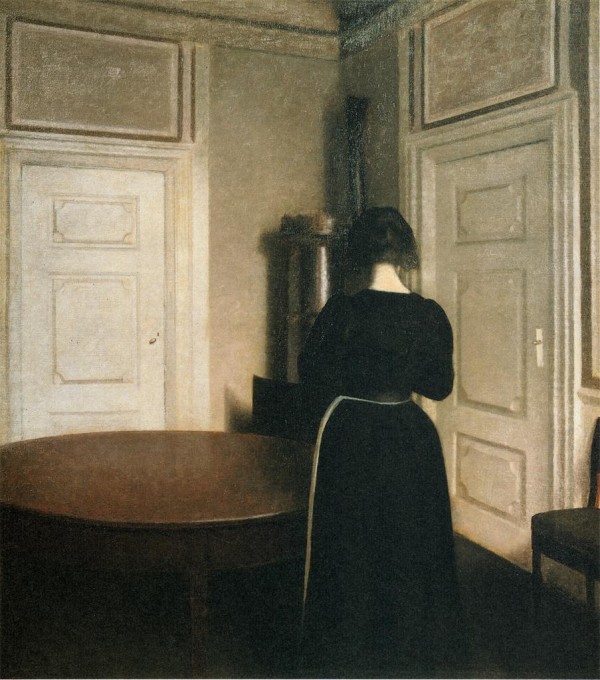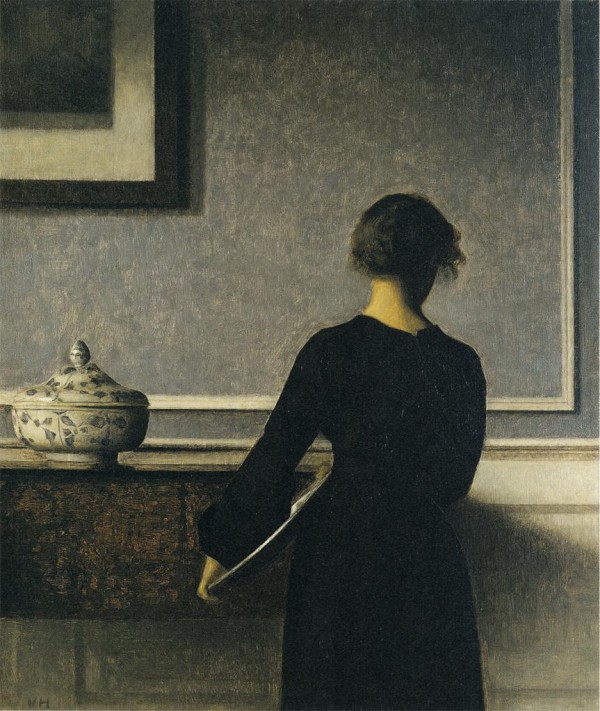Vilhelm Hammershøi
Tuesday, 13 August 2013




From top to bottom: Interior (1899), Interior (ca. 1903-1904), Sunbeams; Dust Motes Dancing in the Sunbeams (1900), Interior with Potted Plant on Card Table (1910-1911)
Ida, facing away.
The artists’ wife turned into the walls, turned onto herself, floating in the intimate foyers of the home she shared with her husband. The Danish winter painted into the walls, breathing a chilling fog over the cherry wood dining table. At times looking out windows, at times facing the covered brick and plaster of the house bought through inheritance, we wish we could comfort her, to touch her shoulder, hold her hand. But mostly all we get is distance, as if we were seeing her from some great distance. It is in that void between us that all of the fallen leaves of autumn could live.
Occasionally light will shine in through the large French windows, but more often then not a soft glow appears from a indiscernible source, as if the artist himself radiated a light for evenly flooding the room. This unknown luminosity gets caught most in the fabric of Ida’s modest dress, trapped into the deep woven black of floor-length robes that seem more fitting for the maid than for the mistress. Where the harsh black-carbon consumes the light of the room, Ida’s porcelain skin radiates tenderness and delicacy. It is as if the fabric has been draped on her not for warmth or decorum, but to contain an incandescence that would truly set the world alight. If only the walls that encased her – the very ones that she seems so preoccupied by –would crumble or fade, then the dimness of the northern winter sun that hovers low above gray horizon wouldn’t be as unbearable.
And yet, as an undeniable yearning coats the canvas of these melancholic vignettes, calling out to Ida, reaching into the gap that keeps us at bay, she won’t turn around. We’re denied her full grace; the artist refuses us what must be an angelic visage. For why would any man want to hide the face of his beloved if not to keep it only for himself.